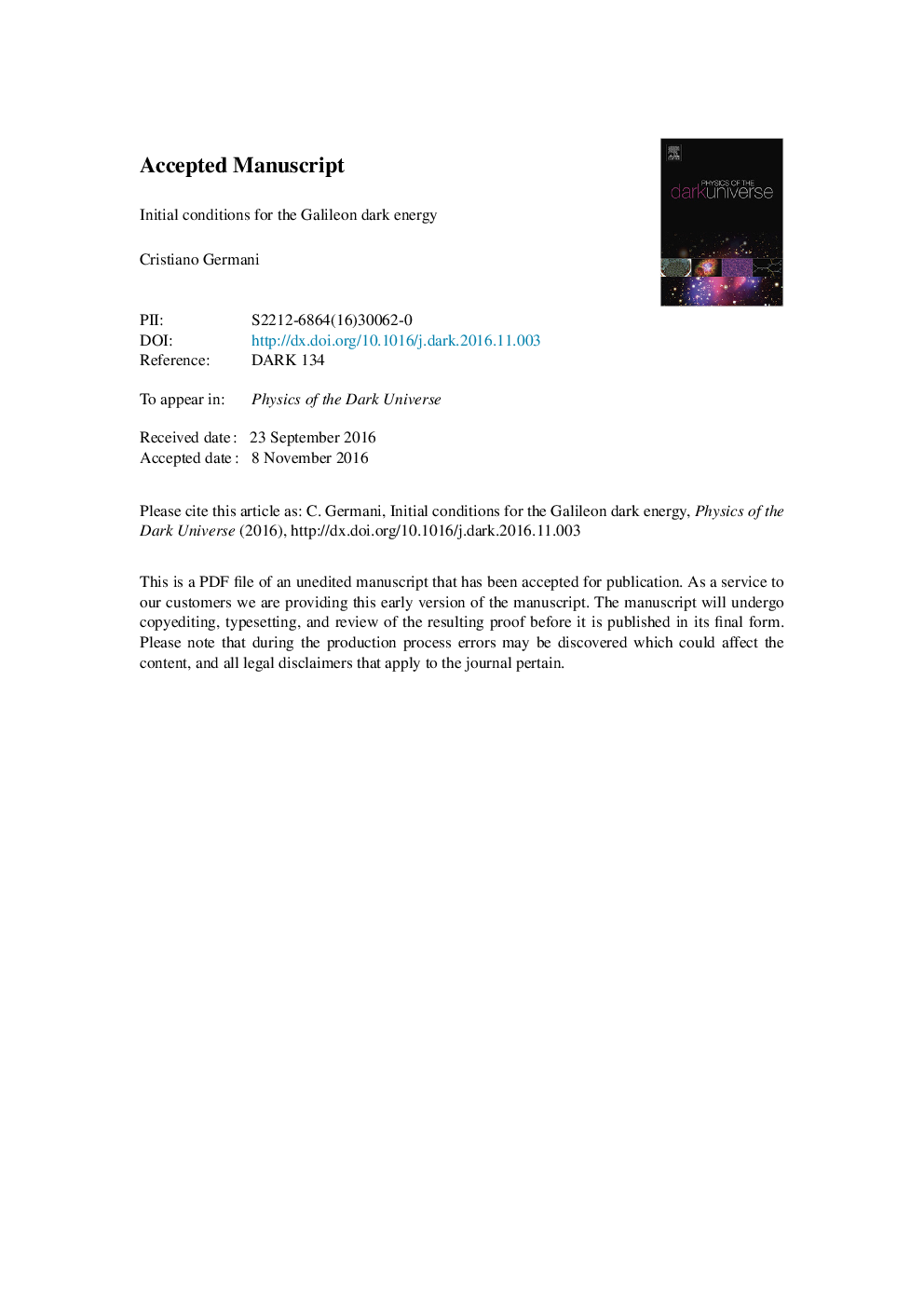| Article ID | Journal | Published Year | Pages | File Type |
|---|---|---|---|---|
| 5487899 | Physics of the Dark Universe | 2017 | 16 Pages |
Abstract
Galileon models are among the most appealing candidates for Dark Energy. The reason is twofold: classically, they provide a tracking solution leading to an almost DeSitter space starting from very generic initial conditions in the deep radiation era. The second reason is the standard lore that Galileons are quantum mechanically stable. The latter property is certainly true in flat space-time, thanks to the non-renormalisation theorems of Galilean coupling constants. However, in a cosmological background, we show that quantum effects might dominate the classical trajectory. Assuming the radiation era to last at least up to the electroweak phase transition, the trajectory with initial conditions sitting on the tracker is ruled out. On the other hand, it is always possible to find a sub-space of initial conditions such that the dark energy solution approaches stably the tracker at late times. Fixing the value of initial conditions that best fit current data, and assuming that the Galileon effective theory is valid up to the beginning of the radiation epoch, we found that the reheating temperature of the universe cannot be larger than 108GeV. Reversing the argument, if dark energy will turn out to be in form of Galileons, the bounds by EUCLID on the initial conditions for these models will also be a bound on the reheating temperature of our Universe.
Keywords
Related Topics
Physical Sciences and Engineering
Physics and Astronomy
Astronomy and Astrophysics
Authors
Cristiano Germani,
